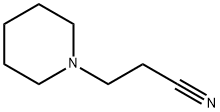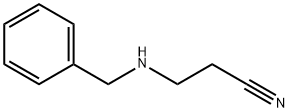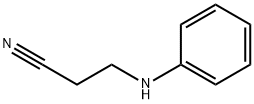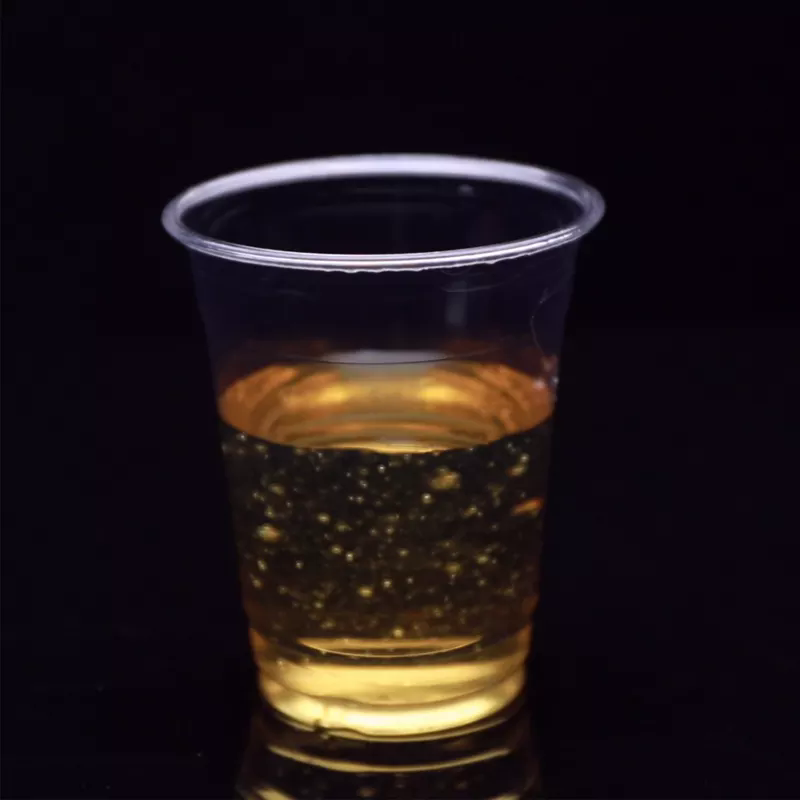3-Aminopropionitrile
- CAS NO.:151-18-8
- Empirical Formula: C3H6N2
- Molecular Weight: 70.09
- MDL number: MFCD00014820
- EINECS: 205-786-0
- SAFETY DATA SHEET (SDS)
- Update Date: 2025-12-26 12:07:08

What is 3-Aminopropionitrile?
Chemical properties
clear colourless to yellow liquid. 3-Aminopropionitrile, [151-18-8], 3-aminopropanenitrile, b-aminopropionitrile, H2N – CH2 – CH2CN, Mr 70.09, bp 185℃ (101.3 kPa), n20D 1.4396, is a colorless liquid which tends to slowly polymerize if stored in the presence of air. 3-Aminopropionitrile is prepared by the reaction of acrylonitrile with ammonia and is mainly used as an intermediate in the manufacture of b-alanine and pantothenic acid [48].
The Uses of 3-Aminopropionitrile
3-Aminopropionitrile is used for organic synthesis and as pharmaceutical intermediates. As an intermediate used in the manufacture of beta-alanine and pantothenic acid.
The Uses of 3-Aminopropionitrile
Production of β-alanine and pantothenic acid.
Definition
ChEBI: An aminopropionitrile carrying an amino group at the beta-position.
Safety Profile
Moderately toxic by intraperitoneal route. An experimental teratogen. Other experimental reproductive effects. Mutation data reported. Nitriles usually have cyanide-like effects. See also CYANIDE. Easily oxidized and unstable. A storage hazard; it polymerizes to an explosive yellow solid. When heated to decomposition it emits toxic fumes of CNand NO,. For fire and explosion hazards see CYANIDE.
Metabolism
3-Aminopropionitrile is the compound present in some Lathyms species (Leguminosae), especially sweet-pea seeds (L. odoratus), causing osteolathyrism in man and animals. Although 3-aminopropionitrile is generally present in the fresh plant as the gama-glutamyl derivative, only the free amine is an effective lathyrogen.
Osteolathyrogens cause skeletal deformations due to interference with the cross-linking between polypeptide chains in the connective tissue components, elastin and collagen. This interference is partly due to inhibition of the synthesis of desmosine and isodesmosine, amino acids which effect the cross-linking in elastin. Cross-linking interference of collagen can be prevented in chicks by feed- ing excess calcium.
It is possible that 3-aminopropionitrile is adegradation product of 3-cyano-alanine, although in many plants the latter compound is converted to asparagine and it has not been detected in Lathyms species.
Properties of 3-Aminopropionitrile
| Melting point: | <25 °C |
| Boiling point: | 185 °C |
| Density | 0.9584 |
| refractive index | 1.4365-1.4395 |
| Flash point: | 79-81°C/16mm |
| storage temp. | Keep in dark place,Inert atmosphere,2-8°C |
| solubility | Chloroform, Methanol |
| pka | 7.80(at 20℃) |
| form | Liquid |
| color | Clear colorless to yellow |
| Water Solubility | Soluble in water. |
| Sensitive | Air & Moisture Sensitive |
| Merck | 14,469 |
| BRN | 1698848 |
| CAS DataBase Reference | 151-18-8(CAS DataBase Reference) |
| EPA Substance Registry System | Propanenitrile, 3-amino- (151-18-8) |
Safety information for 3-Aminopropionitrile
| Signal word | Danger |
| Pictogram(s) |
 Corrosion Corrosives GHS05  Skull and Crossbones Acute Toxicity GHS06  Health Hazard GHS08 |
| GHS Hazard Statements |
H227:Flammable liquids H301:Acute toxicity,oral H314:Skin corrosion/irritation H318:Serious eye damage/eye irritation H361:Reproductive toxicity |
| Precautionary Statement Codes |
P210:Keep away from heat/sparks/open flames/hot surfaces. — No smoking. P260:Do not breathe dust/fume/gas/mist/vapours/spray. P264:Wash hands thoroughly after handling. P264:Wash skin thouroughly after handling. P270:Do not eat, drink or smoke when using this product. P280:Wear protective gloves/protective clothing/eye protection/face protection. P303+P361+P353:IF ON SKIN (or hair): Remove/Take off Immediately all contaminated clothing. Rinse SKIN with water/shower. P305+P351+P338:IF IN EYES: Rinse cautiously with water for several minutes. Remove contact lenses, if present and easy to do. Continuerinsing. P370+P378:In case of fire: Use … for extinction. P405:Store locked up. P403+P235:Store in a well-ventilated place. Keep cool. P501:Dispose of contents/container to..… |
Computed Descriptors for 3-Aminopropionitrile
| InChIKey | AGSPXMVUFBBBMO-UHFFFAOYSA-N |
3-Aminopropionitrile manufacturer
BTC pharm India
Jaagruthi Lifesciences
New Products
4,4-Difluoropiperidine hydrochloride tert-butyl 9-methoxy-3-azaspiro[5.5]undecane-3-carboxylate Indole Methyl Resin N-Isopropylurea N,N-Dicyclohexylcarbodiimide(DCC) MELDRUMS ACID 5-METHYLISOXAZOLE-4-CARBOXYLIC ACID Magnessium Bis glycinate Zinc ascorbate 1-bromo-2-butyne 2-acetamidophenol 9(10H)-anthracenone Erythrosin B, 4-Piperidinopiperidine 2-((4-morpholinophenylamino) (methylthio) methylene) malononitrile 2,4-dihydroxybenzaldehyde 3-(4-morpholinophenylamino)-5-amino-1H-pyrazole-4-carbonitrile Methyl 2-methylquinoline-6-carboxylate 2,6-dichloro-4-nitropyridine 4-Bromo-2-chlorobenzonitrile 2-(benzylamino)acetic acid hydrochloride 4-(tert-Butoxycarbonylamino)but- 2-ynoic acid 3,4-dihydro-2H-benzo[b][1,4]dioxepine 1-Phenyl-1-cycloprppanecarboxylicacidRelated products of tetrahydrofuran








You may like
-
 151-18-8 3-AMINO PROPIONITRILE 99%View Details
151-18-8 3-AMINO PROPIONITRILE 99%View Details
151-18-8 -
 151-18-8 99%View Details
151-18-8 99%View Details
151-18-8 -
 3-amino-propionitrileView Details
3-amino-propionitrileView Details
151-18-8 -
 3-aminopropionitrile 98%View Details
3-aminopropionitrile 98%View Details
151-18-8 -
 3-Aminopropionitrile (stabilized with K2CO3) CAS 151-18-8View Details
3-Aminopropionitrile (stabilized with K2CO3) CAS 151-18-8View Details
151-18-8 -
 3-amino-propionitrile CASView Details
3-amino-propionitrile CASView Details -
 3-Aminopropionitrile 151-18-8 98+View Details
3-Aminopropionitrile 151-18-8 98+View Details
151-18-8 -
 20677-73-0 (2,2-diethoxyethyl)methylamine 98%View Details
20677-73-0 (2,2-diethoxyethyl)methylamine 98%View Details
20677-73-0
